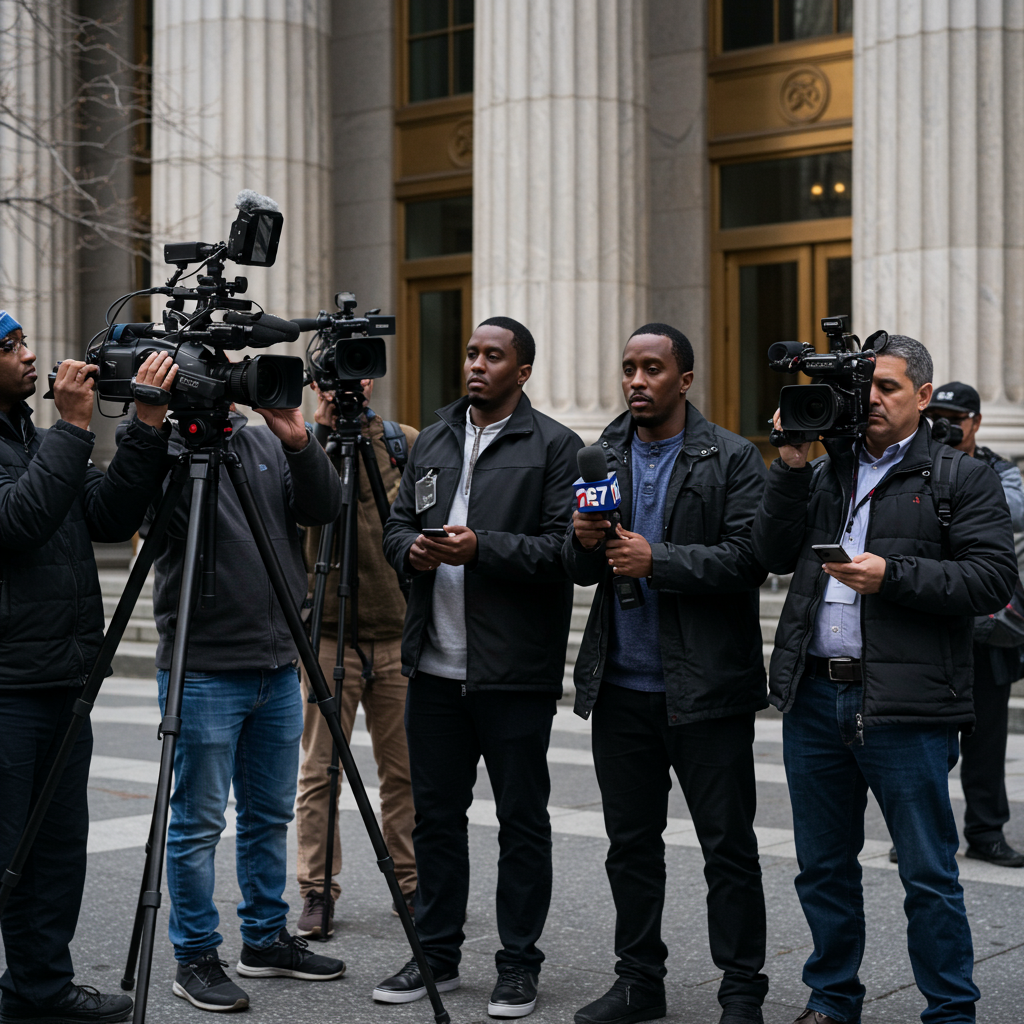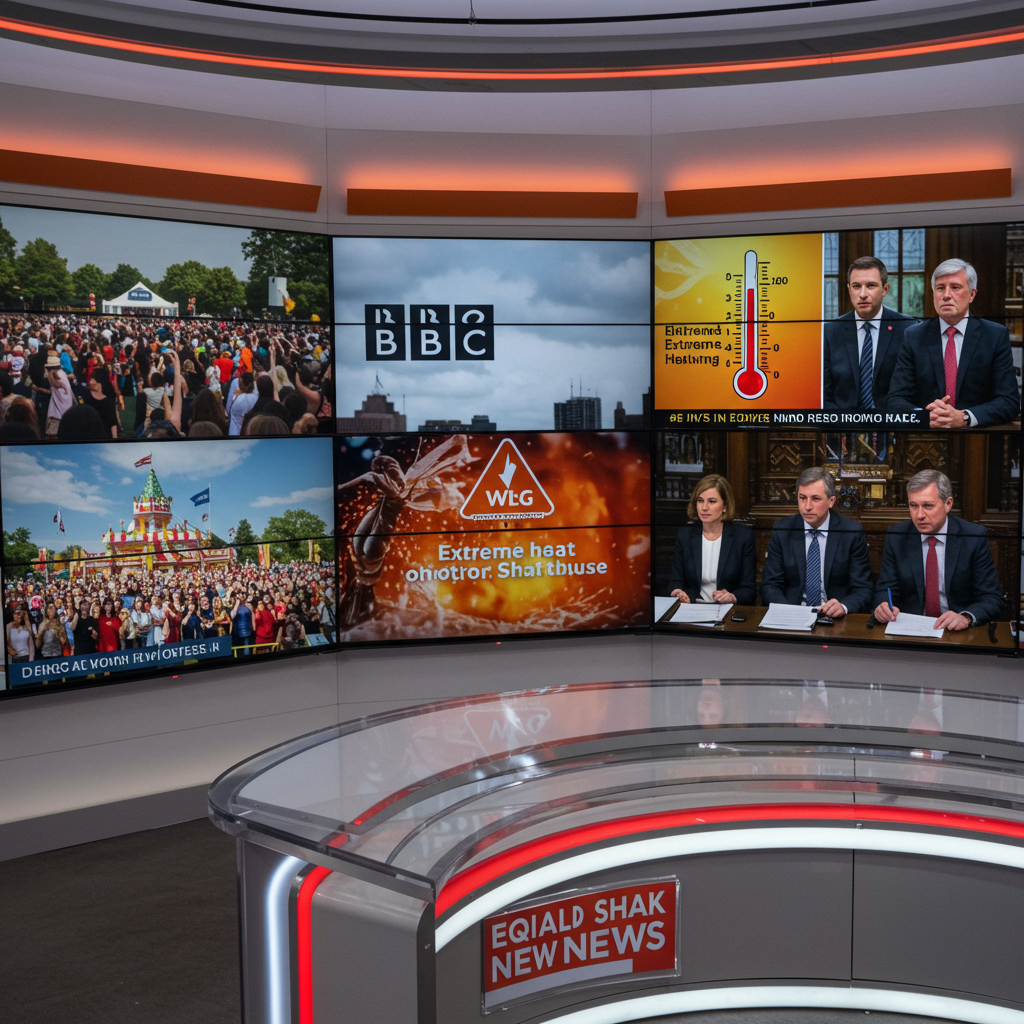The Diddy Trial: A New Era for Courtroom Coverage
The high-profile federal trial of Sean “Diddy” Combs in lower Manhattan is not just a major legal event; it’s also highlighting a dramatic shift in how sensitive courtroom proceedings are covered in the digital age. While traditional media outlets vie for limited seats, a new wave of online content creators – YouTubers, TikTokkers, and streamers – are taking center stage outside the courthouse, redefining trial coverage with methods that push boundaries and raise serious ethical questions.
Unlike trials that are televised, the Combs proceedings, where he faces grave sex trafficking and racketeering conspiracy charges, require those reporting or commenting from inside to relay information secondhand. This environment has created fertile ground for content creators seeking to break news and gain views, but it also presents unique challenges, particularly regarding the protection of vulnerable witnesses.
Anonymity Under Threat: The Cost of Viral Reporting
Despite explicit measures taken by U.S. District Judge Arun Subramanian to protect the identities of accusers testifying under pseudonyms, disturbing leaks have occurred. Two women who took the stand using aliases – “Mia,” a former assistant, and “Jane,” an ex-girlfriend – reportedly had their presumed identities revealed online by courtroom observers turned content creators.
This breach isn’t just a procedural issue; it carries significant real-life consequences. Jane’s lawyer alerted the court that online posts threatened her safety and privacy, the very reasons pseudonyms were ordered. The potential chilling effect on victims coming forward in future high-profile cases is a major concern, as assurances of anonymity feel less secure when identities can be exposed seeking online attention. Efforts by the court and traditional media to protect privacy, like court sketches omitting facial features, stand in stark contrast to some online practices.
The gravity of this issue is underscored by the nature of the testimony being shared. Witnesses like “Jane” have reportedly delivered deeply sensitive and difficult accounts, including allegations of coerced sex acts, violent physical altercations, post-assault coercion, and threats. Revealing the identity of someone sharing such personal trauma puts them at severe risk and undermines the judicial process designed to protect them.
The New Media Landscape: Blurring Lines and Fierce Competition
The scene outside the courthouse is a microcosm of the evolving media landscape. A diverse mix of traditional reporters, seasoned journalists leveraging social media, and independent streamers compete for space and attention. When court pauses, these creators often swarm sidewalks, setting up tripods to deliver immediate reactions and summaries to their followers, sometimes reaching audiences far larger than legacy news outlets could have imagined a decade ago.
These creators employ varied styles. Some, like the person behind the YouTube channel “Make It Make Sense,” emphasize the importance of sharing accuser experiences while also urging followers to respect anonymity rules. Others, like TikTokker Michelle Bracy, aim for relatable coverage, taking extensive notes in court and presenting information from a neutral stance, though acknowledging the desire for viral moments. Streamers like Oota Ongo approach it as their “trial of the century,” documenting the chaotic atmosphere and their own reactions.
The competition is fierce, even extending to securing access; some creators reportedly pay individuals to hold spots in the lengthy lines for courtroom seats. Inside and out, the focus isn’t always solely on delivering impartial facts. Many creators blend factual reporting with personal commentary, analysis of legal strategies, and even entertainment elements, sometimes drawing millions of views by synthesizing information from traditional news sources and live court updates.
Navigating Uncharted Territory
While online creators play a vital role in making complex legal stories accessible to a wider, often younger, audience – breaking down testimony and explaining legal terms in real-time – their integration into trial coverage raises fundamental questions. The push for virality, sometimes overriding ethical considerations like witness anonymity, highlights a tension between the demands of online platforms and the solemnity and privacy requirements of the justice system.
This dynamic is part of a broader trend where creators operate in a less formally regulated space than traditional journalism, sometimes testing boundaries in ways that lead to conflict, whether related to content copying or, more seriously, privacy violations in high-profile cases.
As the Diddy trial continues, potentially through early July, the courtroom and online spheres remain intertwined. The judge is exploring potential repercussions for those who violate protective orders, signaling the legal system’s challenge in adapting to the rapid, often unpredictable, nature of social media-driven news. The presence of content creators at such trials is likely permanent, but defining the ethical “rules” for this new frontier remains a critical, ongoing test.


